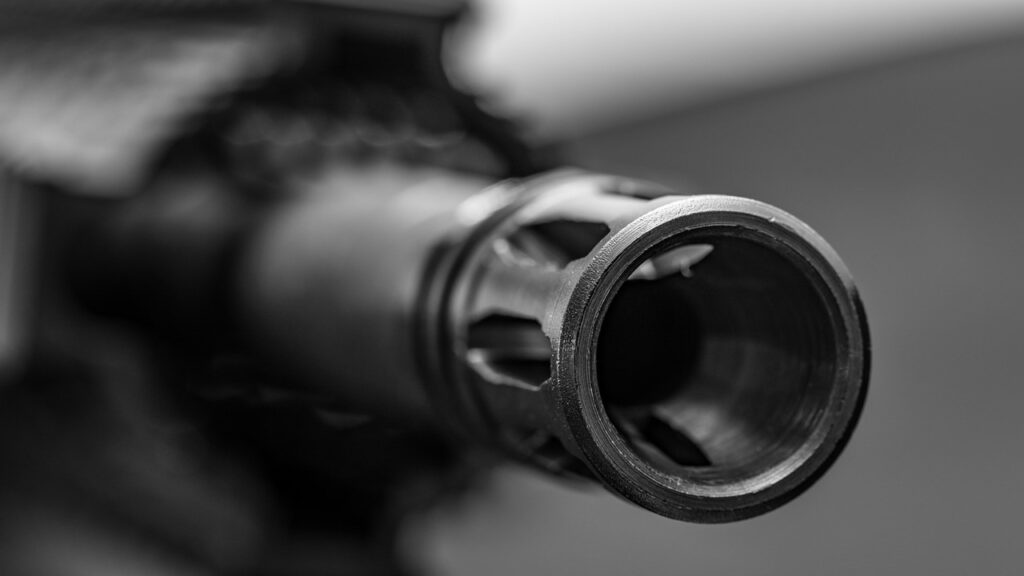When customizing and upgrading your AR-15 rifle, the muzzle device is one of the first things to consider. A muzzle device is a piece of equipment that attaches to the end of the barrel and enhances the weapon’s performance. There are three main types of muzzle devices: muzzle brakes, flash suppressors, and compensators. Each of these devices serves a specific purpose, and choosing the right one can significantly improve the function and performance of your AR-15.
Muzzle Brakes
A muzzle brake is a device that redirects or deflects high-pressure and high-velocity gases to the rear, reducing the effects of recoil. This allows for better control of the weapon and quicker follow-up shots. Some of the pros of a muzzle brake include the following:
- Reducing the effects of recoil to gain control of your weapon better
- Allows you to perform successive shots better by acquiring or reacquiring targets easily with the weapon’s reduced movement
- Reduces recoil impact on your shoulder and body
However, there are also some cons to consider when choosing a muzzle brake:
- Lack of flash suppression – may impair your night vision or give away your position in combat
- Gas vent direction means that you are directing extreme amounts of noise, gas, and concussive force to the people around you. This can be an issue in combat or at the range.

Flash Suppressors
A flash suppressor, also known as a flash hider, is a device that manipulates vented gases to reduce or eliminate muzzle flash. Some of the pros of a flash suppressor include the following:
- Helps to keep your position concealed during night-time combat excursions
- Night blindness is reduced or eliminated
However, there are also some cons to consider when choosing a flash suppressor:
- No recoil or accuracy-increasing benefits
- Specialized muzzle device that primarily benefits the user in low-light or nighttime missions – dead weight in daytime missions.
Compensators
A compensator is a device that redirects high-pressure and high-velocity gases upward, reducing muzzle climb or “flip.” Some of the pros of a compensator include the following:
- Reduces muzzle climb or “flip.”
- Perform successive shots easier – reduced muzzle flip means quicker follow-up shots
- Improved control for rapid fire, grouping is tighter, which means a more effective barrage of bullets going downrange
However, there are also some cons to consider when choosing a compensator:
- Same as the muzzle brake – loud, and no flash suppression

Other Considerations
When choosing a muzzle device for your AR-15, there are a few other factors to consider:
- Barrel Length and Muzzle Device Durability – Due to barrel variance, the intense super-hot gas pressures are also at different levels. Because of this, the best muzzle device for your AR will depend on calculating this factor.
- Size and Weight – A rifle is cumbersome enough, and adding length and extra weight will affect the weapon’s balance and the way you can maneuver the weapon to bear on targets.
- Thread Pitch and Caliber – Not all muzzle devices fit the AR/M16/M4 (1/2”-28). Some are made for the .308 (5/8”-24). The right caliber and thread pitch for the right barrel.
- Suppressor Compatibility – If you are planning on keeping your AR silent
If you’re looking for a solid platform to build your own unique rifle or just ready to get a perfect rifle off the shelf, check out the complete rifle and complete upper receiver options from Critical Objectives. These side-charge AR-15 builds are like nothing else on the market!

